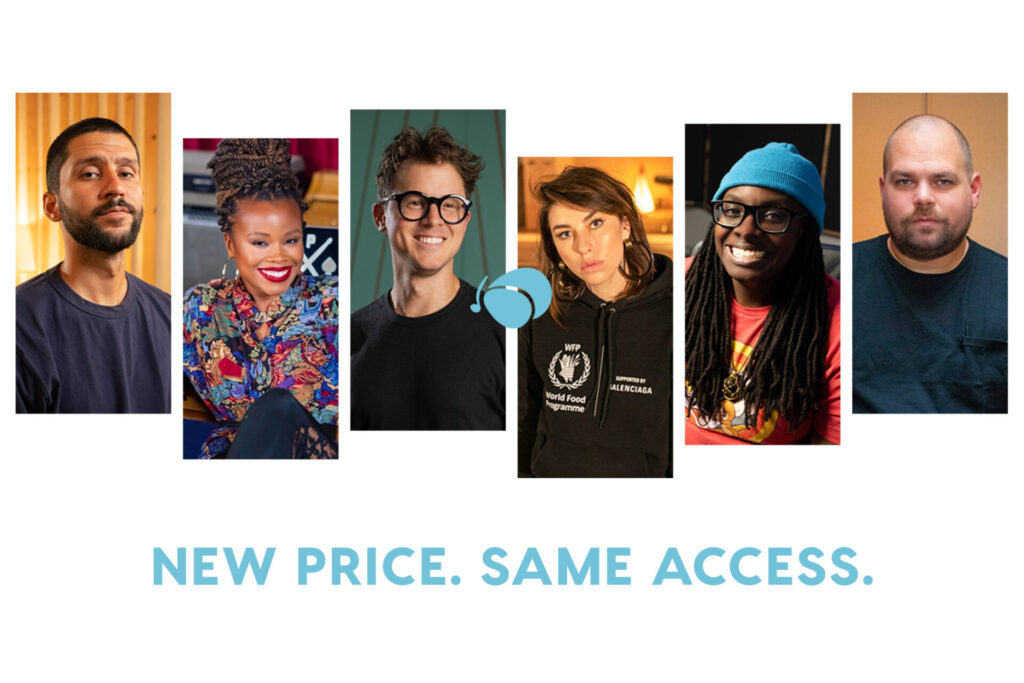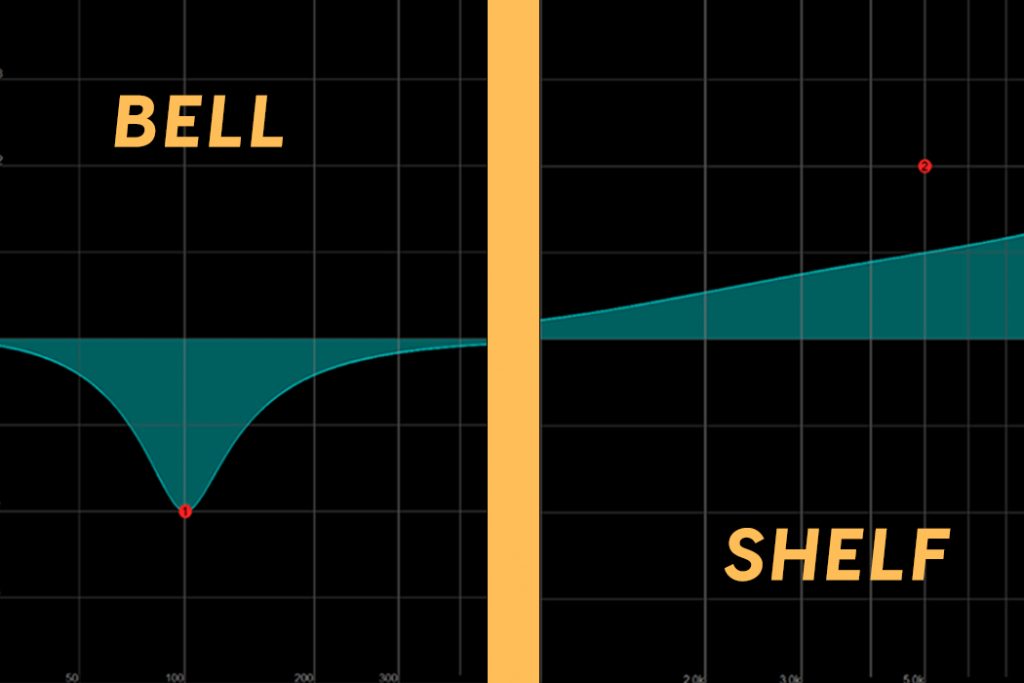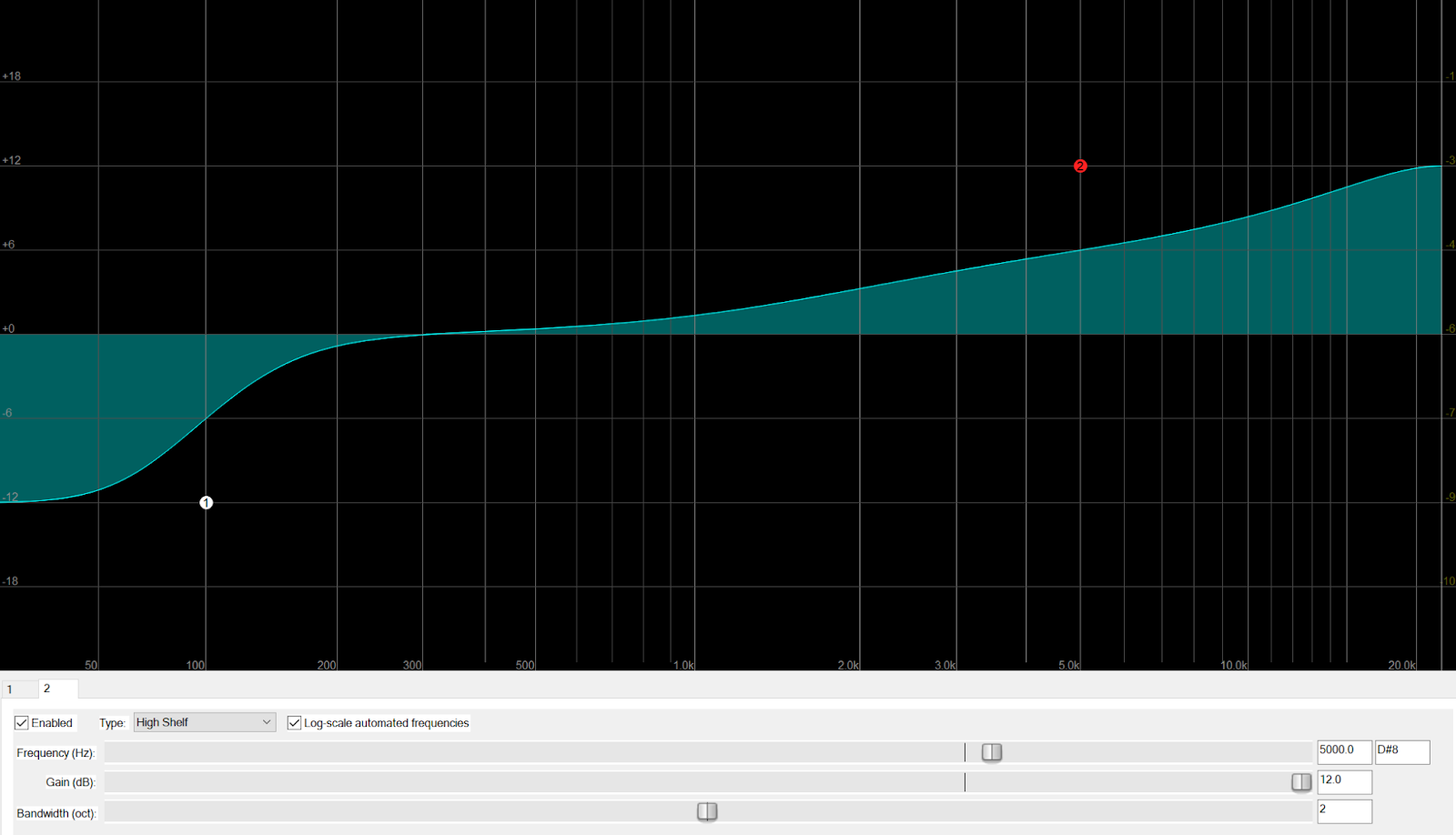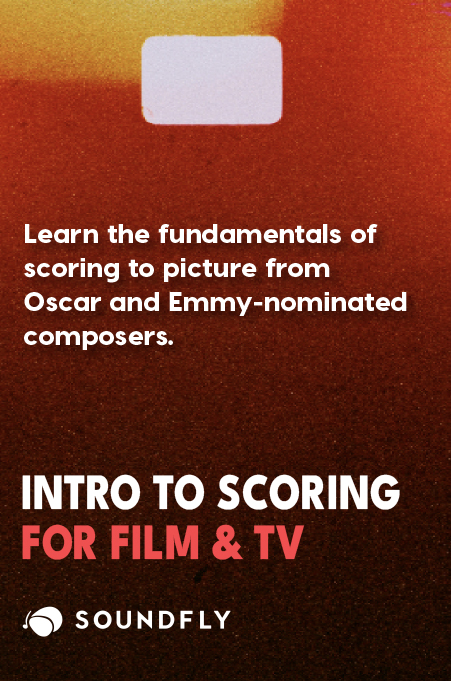+ Ryan Lott (of Son Lux) teaches how to build custom virtual instruments for sound design and scoring in Designing Sample-Based Instruments.
Equalization, in theory, is quite simple.
It’s just a more specific gain control that targets specific frequencies of a recording, rather than the whole sound. However, anyone who’s tried to mix knows that, in practice, EQ can amount to an overwhelming series of options.
If you don’t know how to understand and navigate these decisions, you could be losing time and hurting your audio production.
Moving further, understanding the differences between shelf EQ and bell (or band) EQ can help you out immensely.
Today we’ll be focusing on two specific kinds of EQ and how to use them. For a more general primer on EQ as a whole, check out Equalization 101. Bear in mind that, as with all mixing advice, this is art and not science. There are no rules, only suggestions and useful information.
What Are the Differences?
All EQs have the following controls, regardless of whether or not the user can modify them. These are gain, frequency, and bandwidth. Shelf and bell EQs are simply different ways that these controls can work together.
A bell EQ increases or decreases the gain at the selected frequency. It then progressively returns the gain to unity on either side of the frequency point, based on how steep or shallow the bandwidth is.
Below, we can see two bell EQ “moves.” The +12dB boost at 5kHz has a low bandwidth. We might call this surgical, sharp or precise. The -12dB cut at 100Hz has a higher bandwidth, leading to a shape that could be called gentle or broad.

In contrast to a bell EQ, a shelf EQ does not express its maximum gain change at the frequency point. Instead, the frequency point will be the middle of a gradual change from unity gain to the target boost or cut. And unlike the symmetrical bell EQ, a shelf is asymmetrical and comes in two varieties.
Below we can see that the low shelf EQ is performing a cut with a steeper curve than the high shelf EQ is boosting the signal. Providing no other EQs are in play, shelves are designed to express their boosts or cuts without interruption. As you can see, the gain changes apply from the frequency point all the way to the “ends” of the frequency spectrum.
Using Shelf EQ
It’s clear that a shelf EQ is less precise than a bell EQ, as it will invariably affect large sections of the low or high frequency spectrum. However, this lack of precision has a fantastic byproduct: transparency.
The fact that the gain change continues smoothly all the way to the end of the human hearing range can fool the ear and brain into thinking there’s little or no EQ there at all. The upshot here is that shelves can make your EQ move feel more natural to the listener.
So if you’re dealing with a sound source that has a general issue in the low or high frequencies, a shelf EQ could be what you need. For instance:
- A dull vocal, or lead synth, can be brightened with a high shelf boost around 3kHz.
- Unpleasant woolly frequencies in drum overheads can be managed with a low shelf cut. Experiment between 100-300Hz to see what sounds good.
- Acoustic instruments, like guitars or strings, can have unpleasant high frequencies. A judicious high shelf cut around 10kHz can manage these without killing all the airiness in the sound.
+ Read more on Flypaper: “How to EQ an Acoustic vs. Electric Guitar.”
In these applications, a bell EQ may be less effective. As it targets more limited part of the frequency spectrum, the listener’s brain might hear these more specific boosts or cuts as unpleasant resonances or strange “gaps” in the sound. And low and high pass filters, which remove all content above and below the frequency, might end up sounding too drastic.
The variable gain of the shelves really can have the edge here, helping your moves sound and feel organic and seamless.
+ Enjoy access to Soundfly’s suite of artist-led music learning content for only $12/month or $96/year with our new lower price membership. Join today!

Using Bell EQ
There’s a bit of a yin and yang thing going on here. While the bell EQ can lack transparency when the gain is turned up, it excels and a precision tool. A bell EQ with a narrow bandwidth can cut into a sound like a scalpel, excising extraneous content that could be holding the recording back. Examples include:
- The infamous midrange mud that lives in variable locations between 200Hz and 2kHz. Sound sources that are dense and sustained (synths, vocals, room microphones) are affected most by this issue, although it can apply to tight percussive sources as well.
- Hi-midrange hissing or spikiness that occurs between 2-8kHz. Electric guitar cabinets suffer chronically from this, and it can also be found in drum overheads.
- Low-end hum that exists between 80-200Hz. Watch out for this in bass guitars, bass synths, pads, kick drums, toms and baritone vocals.
The risk with surgical bell EQ is that it’s easy to overdo things. Remember the phrase “death by a thousand cuts?” Remove too much and you’ll have nothing left but a thin sound that will struggle to compete in the mix.
When boosting with a bell EQ, the key thing guiding your choices around bandwidth, gain and frequency should be context. Yeah, that aggressive and narrow +8dB boost at 5kHz might sound weird when the kick drum is soloed, but does it help the beat cut through your busy mix? And since you’ve already hit that kick drum with a low shelf EQ at 60Hz, it’s occupying the low sub space of your mix pretty thoroughly. Let’s match it with a gentle and broad bell EQ boost to the bass guitar around 80Hz. This could add some broad, big low end to that instrument without treading on the kick drum’s toes.
As always, let your ears be the judge.
Don’t stop here!
Continue learning with hundreds of lessons on songwriting, mixing, recording and production, composing, beat making, and more on Soundfly, with artist-led courses by Kimbra, Com Truise, Jlin, Kiefer, and the new Ryan Lott: Designing Sample-Based Instruments.





